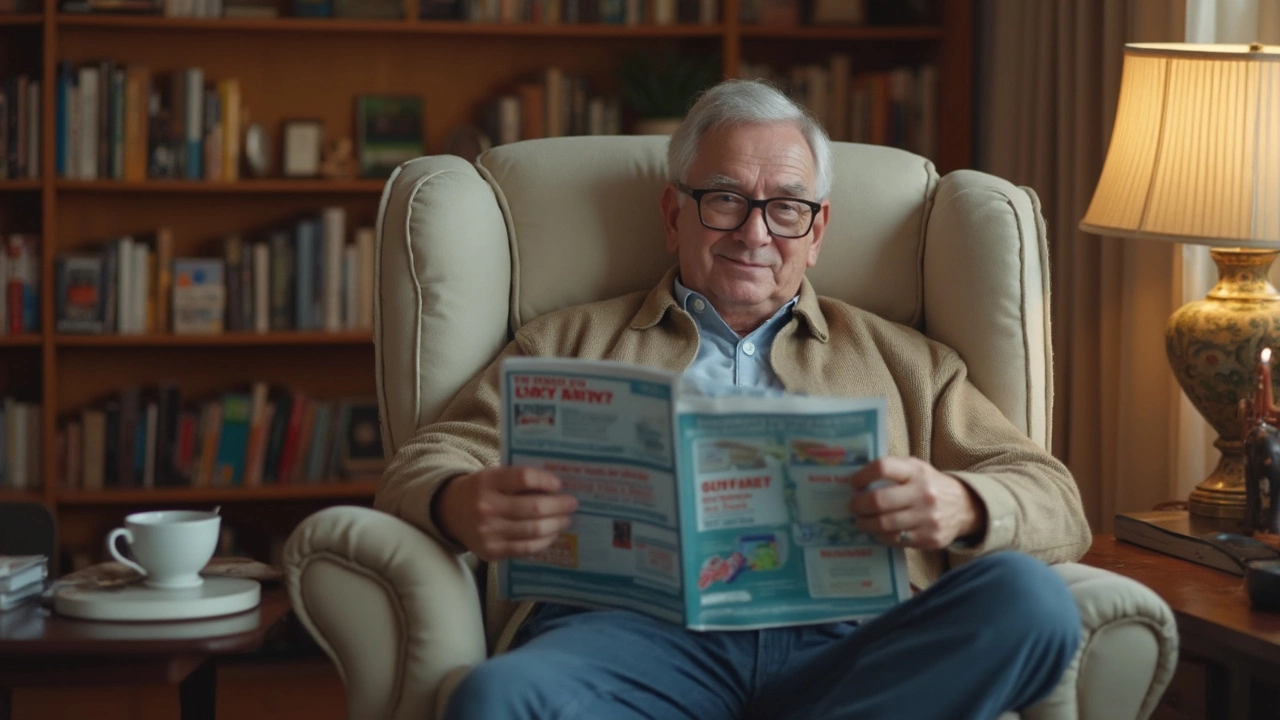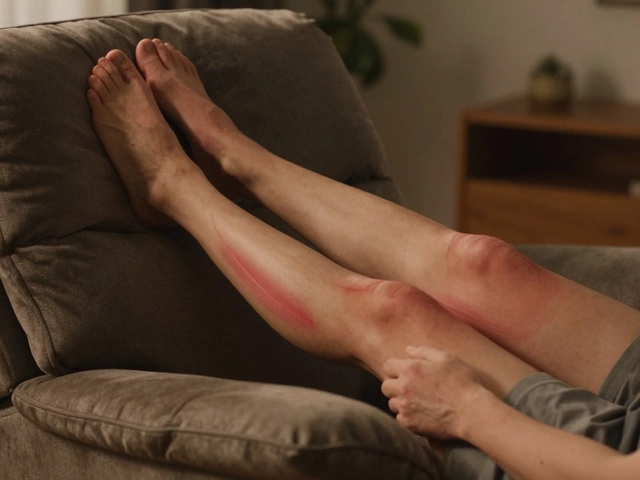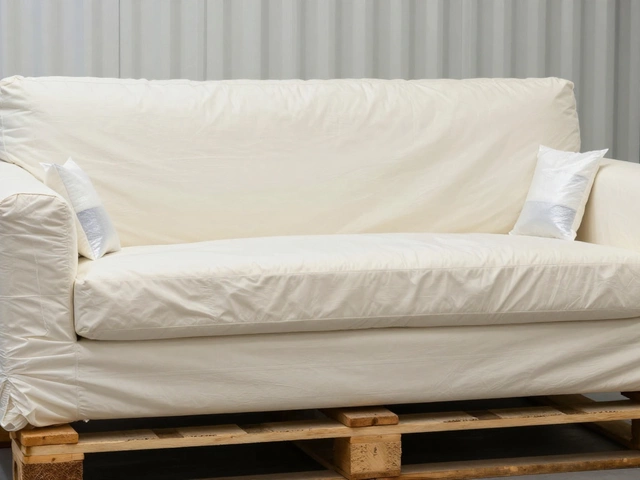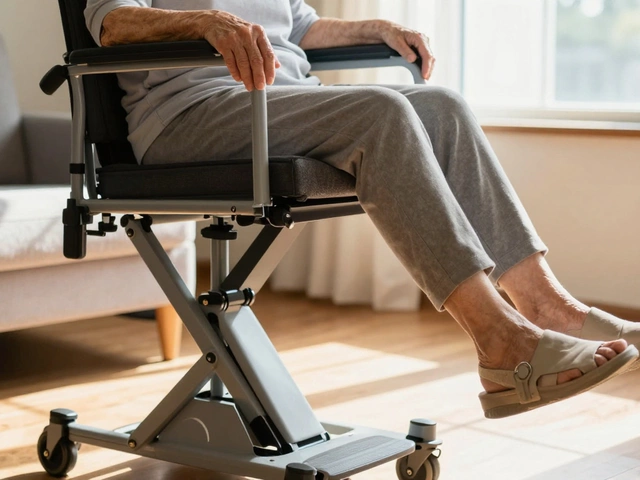When your back keeps acting up, a soft, plush chair starts to look like the answer to your prayers. Lazy Boy recliners have that reputation for knock-out comfort. But is kicking back really good for your spine, or does all that relaxing come with a price?
Back pain is stubborn, so people search for anything that gives relief—even if it means dropping serious cash on furniture. The truth is, not all recliners are the same. What matters is how well they fit your body and if they support the natural curve of your spine. Some models help take the pressure off your lower back; others might actually leave you feeling more stiff and sore.
If you want a chair that helps, not hurts, you’ve got to pay attention to features like lumbar support, adjustability, and seat depth. Too many folks just pick a trendy design or something soft as a marshmallow without thinking about the long haul. Knowing what actually matters can save you a lot of pain and money down the road.
- How Recliners Actually Work
- Back Health: The Pros and Cons
- Picking a Recliner That Supports You
- Tips for Recliner Users with Back Pain
How Recliners Actually Work
Recliners like Lazy Boy are built to do one main thing: let you lean back and put your feet up, taking weight off certain pressure points. What makes these chairs special are the mechanics under the fabric. They use a combination of levers, springs, and sometimes electric motors to change the angle of the seat and back, raising the footrest and tilting the chair.
The big draw of a recliner is how it allows your body to rest in a position that’s typically less stressful for your back. When you kick back, gravity isn’t pushing straight down on your spine the same way as when you sit upright in a regular chair. This is especially true if the recliner has proper lumbar support for your lower back.
Most new models go beyond a basic backrest. Some offer adjustable headrests, extra padded armrests, or even built-in massage and heat. The best part? Many Lazy Boy recliners let you tweak the angle for both the back and footrest so you’re not locked into just one position. This makes it easier to find a spot that suits your body, whether you’re dealing with back pain, swollen legs, or you just want to nap.
- Manual recliners use a lever or handle you pull to shift the chair.
- Power recliners operate with buttons or a remote, so you can set the angle precisely.
- Modern options sometimes track the natural curve of your spine, offering even support as you move.
Lazy boy recliners also tend to use denser foam and rugged frames, which means they can provide a steady base—even after years parked in front of the TV. But the way the chair fits your body is what really matters most for your back.
Back Health: The Pros and Cons
When it comes to your back, a recliner can be a game changer—or a total letdown. The big draw of lazy boy recliners is how they can take the pressure off your lower back and legs. Sitting up straight in a regular chair for long stretches can make your lower back ache, especially if you slouch or hunch. In a reclined position, most of your body weight spreads out more evenly, which helps some folks relax tense muscles around the spine.
On the plus side, Lazy Boy recliners often come with built-in lumbar support. This means there’s an extra cushion or curve right where your lower back needs it. If you adjust the chair right—putting your feet up so they’re close to heart level—you cut down swelling in your legs. Some studies say that reclining by even 20 degrees off vertical can reduce pressure on spinal discs by nearly half compared to upright sitting. Take a look at what happens to your back in different positions:
| Body Position | Pressure on Lower Back (% of body weight) |
|---|---|
| Standing | 100% |
| Sitting upright | 140% |
| Leaning forward (hunched) | 185% |
| Fully reclined (120-degree angle) | 75% |
But there’s another side to the story. If a recliner is too soft, too deep, or doesn’t match your body height, it can make things worse. Slouching or sinking into a chair with no support makes existing back pain linger or even get worse over time. Getting in and out of an oversized chair can also be uncomfortable, especially for those dealing with arthritis or mobility issues.
Not everybody benefits in the same way. People with certain types of back pain, like herniated discs, often find moderate reclining supportive. But others—especially those with specific posture needs or severe spinal issues—might actually need firmer support or guidance from a doctor. Takeaway: the right recliner feels comfortable, keeps your back in neutral alignment, and doesn’t force you into strange positions.
- Always look for adjustable lumbar support.
- Try before you buy—spend at least 10-15 minutes in a showroom chair.
- If you find yourself sliding or slumping, chances are it’s not the right model for your frame.
In the end, Lazy Boy recliners can be a help for back pain—but only when they fit well and you use them the right way.

Picking a Recliner That Supports You
Choosing the right recliner is honestly half the battle when it comes to back health. Not every comfy-looking chair in the showroom will do your spine any favors. The best way to start? Focus on lazy boy recliners that match your body size, offer proper lumbar support, and have smooth adjustability.
Most people don’t realize that if your feet can’t touch the floor or your lower back isn’t snug with the backrest, you’re setting yourself up for stiffness. Your chair should let you sit with your knees at hip level or just a bit higher. Many Lazy Boy models are now designed with ergonomics in mind, which means they pay attention to how your body curves and where you need pressure taken off.
According to the Cleveland Clinic, “A good recliner supports the back’s natural S-shape and helps distribute weight evenly.” I get it—sometimes you just want to fall back and relax, but if you’re sitting for hours, that S-curve matters more than you might think.
“The best recliner provides adjustable lumbar support and footrest so the spine, hips, and legs get relief, not punishment,” says Dr. Griffin Gage, a board-certified physical therapist.
Here’s a simple checklist when you’re out shopping or browsing online:
- Lumbar support: Look for a model with adjustable lumbar support or a built-in cushion in the lower back area.
- Seat depth: Your knees should be just off the seat’s edge with your feet flat on the floor.
- Adjustable headrest: Keeps your head and neck in a comfortable line with your spine.
- Recline range: The chair should offer several positions, not just upright and fully reclined.
- Easy controls: Especially if you have mobility issues, test the levers or buttons before buying.
For the data lovers, check this out: Lazy Boy’s own research shows that ergonomic models reduce reported discomfort by about 32% after two weeks of regular use.
| Feature | Why It Matters |
|---|---|
| Lumbar Adjustment | Prevents slouching; keeps the lower back supported |
| Seat Height | Reduces pressure on hips and knees |
| Flexible Recline | Lets you change angles so you’re not locked in one posture all day |
| Head/Neck Support | Avoids neck pain from watching TV or napping |
Bottom line: Don’t just go for looks or first impressions. Sit in the chair. Move around. If you share your recliner, get one that fits the person who uses it most. A little shopping smart saves a ton of “Why does my back hurt?” later.
Tips for Recliner Users with Back Pain
If your back bothers you and you love sinking into your recliner, you’re not alone. About 65 million Americans say they deal with back pain at some point, and plenty of them reach for their favorite chair at the end of the day. But just parking yourself in a recliner isn’t enough—you have to use it right.
- Pick a recliner with adjustable lumbar support. Your lower back needs a chair that meets it, not one you have to sink your spine into. Models with customizable lumbar areas make a huge difference for most people with back problems.
- Watch your posture even when you’re relaxing. It’s tempting to slouch and sprawl, but keeping your back aligned helps your spine take a break without making things worse. The best position lets your feet touch the ground and your knees line up with your hips.
- If the seat is too deep, tuck a pillow behind you. This brings your back closer to the lumbar support and stops your tailbone from taking all the pressure. If your chair didn’t come with an extra pillow, almost any firm cushion will do.
- Give standing a try every 30 to 40 minutes. Staying in one spot, even a comfy one, can make you stiff. Setting a phone timer helps remind you.
- Be careful with heat and massage features. A heated recliner can feel nice at first, but don’t overdo it—20 minutes tops or you could end up more sore than before.
A lot of folks want stats, so here’s a simple breakdown based on recent surveys by the American Chiropractic Association. People who used a recliner with lumbar support at least three times a week reported:
| Experience | Percentage Reporting Improvement |
|---|---|
| Lower back pain relief | 58% |
| Better sleep after use | 42% |
| Improved posture awareness | 35% |
Bottom line: a lazy boy recliner can help your back if you pick the right model, pay attention to how you’re sitting, and don’t treat the chair like it’s an excuse to stay still all night. Adding little tricks—like setting reminders or adding a pillow—might sound simple, but they really do add up.







